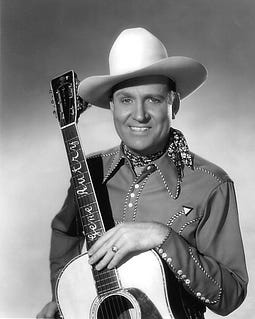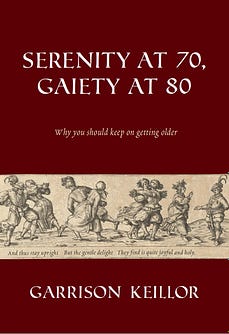|
 |
The Writer's Almanac from Friday, September 29, 2017
“Those Places” by Kay Ryan from Erratic Facts. © Grove Press, 2015.
ORIGINAL TEXT AND AUDIO - 2017
On this day in 1954, the European Organization for Nuclear Research, better known as CERN, came into being. At the end of World War II, the United Nations began to investigate the possibility of a joint research laboratory, with the goal of understanding the inner workings of the atom. European scientists hoped CERN would help put them back on the map, after the delays of war. Nuclear research came with a high price, and a collaborative center promised to benefit multiple nations. The convention establishing CERN was signed by Sweden, Belgium, France, Germany, Greece, Denmark, Italy, Norway, the Netherlands, Switzerland, the U.K., and Yugoslavia. Officials looked on as workers broke ground near Geneva, where CERN still operates today.
CERN’s fundamental goal was to better understand natural law using particle accelerators, which smash particles together at close to the speed of light. CERN’s first accelerator was built in 1957. In the decades that followed, scientists who worked with CERN made progress in understanding antimatter, biology, nuclear medicine, and radiation. These days, CERN still uses particle accelerators to investigate the origins and materials of the universe.
In 1990, the first World Wide Web server was launched from CERN’s lab. In 1993, CERN made the technology available for free, ushering the Internet into public life.
CERN’s advancements have not always been received with open arms. CERN’s Large Hadron Collider, or LHC, the largest machine in existence, began to operate in 2008 amid plenty of controversy. The LHC represented the most important experiment in particle physics to date, and CERN employed half of all the world’s particle physicists. But CERN faced a legal battle waged by those worried that the machine could create a black hole capable of devouring the Earth. While still controversial, LHC remains in operation, and the Earth has yet to vanish.
Today is the birthday of “the kindly gentleman in the white hat”: Gene Autry (1907), the original cowboy superstar of cinema. Autry gained fame in the 1930s and ’40s for a series of films in which he played a red-blooded cowboy hero of the American West, with his horse, Champion, and his sidekick, Smiley Burnett, always in tow. Autry was also a prolific singer and sang some of the most famous Christmas songs in history, like “Rudolph the Red-Nosed Reindeer,” which is now the third-best-selling single of all time.
Gene Autry was born in Tioga, Texas, a tiny town of fewer than 500 people. Most people were poor, and many couldn’t read or write. Autry once said, “When I grew up on the [railroad] line between Texas and Oklahoma, X was not a rating for dirty movies. It was the legal signature of about a third of the population.” He didn’t have much schooling and took it upon himself to learn about the world by reading two or three newspapers a day, including the classified ads.
When he was 12 years old, he worked on his Uncle Calvin’s farm baling hay so he could save up $8.00 to buy a guitar from the Sears, Roebuck Catalog. “It was mean work for a wiry boy, but ambition made me strong,” he said. He taught himself to play and to sing, and before long, he’d moved on to working as a telegrapher, where he sang and played to pass the night shift. One intrigued customer turned out to be singer and humorist Will Rogers, who encouraged him to try his hand singing professionally.
Gene Autry was signed to his first record contract in 1929 and recorded the song “That Silver-Haired Daddy of Mine.” Autry also wrote and recorded songs like “Peter Cottontail,” “Here Comes Santa Claus,” “Tumbling Tumbleweeds,” “You Are My Sunshine,” “South of the Border,” “Mexicali Rose,” and his theme song, “Back in the Saddle Again.”
In 1935, he made Tumbling Tumbleweeds, considered the very first “singing cowboy movie.” He went on to make movies like Western Jamboree (1938) and Cowboy Serenade (1942). A few years later, Gene Autry was so popular worldwide that when he visited Dublin, Ireland, 200,000 people lined the streets to see America’s famous singing cowboy.
Autry’s movies were simple: he saved good guys from bad guys, he never shot first, he never kissed his leading ladies, he sang, and he always rode off into the sunset on Champion. Autry even came up with a “Cowboy Code of Conduct” for kids, which included rules for young cowboys like, “He must be gentle with children, the elderly, and animals,” “He must always tell the truth,” “He must not advocate or possess racially or religiously intolerant ideas,” and “He must never go back on his word, or a trust confided in him.” The Cowboy Code of Conduct inspired the Boy Scouts of America to adopt its own code of conduct.
Gene Autry acted in movies, had a radio show and a television show, and when he retired from show business, he bought a baseball team and named it the Anaheim Angels. He was a devoted lifelong baseball fan. The Angels never won a pennant, to which Autry lamented cheerfully: “For sure, after baseball has been the most exciting and frustrating experience of my life. In the movies, I never lost a fight. In baseball, I hardly ever won one.”
Gene Autry once said: “It occurs to me that music, with the possible exception of riding a bull, is the most uncertain way to make a living I know. In either case you can get bucked off, thrown, stepped on, trampled — if you get on at all. At best, it is a short and bumpy ride.”
And, “I’m not a good actor, a good rider or a particularly good singer, but they seem to like what I do, so I’ll keep on doing it as long as they want.”
In 1941, the town of Berwyn, Oklahoma, renamed itself “Gene Autry.”
Today is believed to be the birthday of Miguel de Cervantes, born near Madrid (1547), whose life was a series of misfortunes. As a young man, he fought in a war against the Ottoman-Turkish Empire, and he became a war hero, receiving special recognition from the king. But on the way home from the war, he was captured by pirates, held for ransom for five years, and chained to a wall for months at a time. He finally made it back to Spain, where nobody even remembered the battle he had fought in. So he took one of the only government jobs he could find, confiscating agricultural goods for the king. He had to travel around the countryside in all kinds of weather, arguing with shopkeepers and farmers, enduring accusations of corruption everywhere he went. Then in 1595, he was charged with embezzlement, even though he was probably one of the only honest employees working for the government at the time. Having escaped five years of captivity in Africa, Cervantes now found himself imprisoned in his own country for a crime he didn’t commit.
And it was in prison that Cervantes first got the idea for his masterpiece, Don Quixote (1605), a parody of the popular trashy romances of the era, full of monsters, wizards, and beautiful princesses. Cervantes’s novel was about a middle-aged man named Don Quixote who has read so many romances that he comes to believe they are true. And so one day he embarks upon a career as a knight and takes as his squire a farmer he knows named Sancho Panza. The two go off on a series of misadventures, arguing constantly about whether they live in a world full of romance and enchantment, as Don Quixote sees it, or whether they live in a world of bandits and prostitutes and beggars, as Sancho Panza sees it.
The first volume of the novel was a best-seller, though it didn’t make Cervantes much money, because there was no copyright at the time, and pirated editions were published all over Europe. So Cervantes wrote a second volume, in which Don Quixote and Sancho Panza learn that they have become famous since someone has published a book about them. They travel around the country, correcting the falsehoods that have been spread about them, and they struggle to prove that they are indeed the real Don Quixote and Sancho Panza, not the fictional versions. Most critics consider the second volume even better than the first.
Miguel de Cervantes said, “Too much sanity may be madness and the maddest of all, to see life as it is and not as it should be.”
Be well, do good work, and keep in touch.®
CLICK HERE to purchase Serenity at 70, Gaiety at 80.
You’re a free subscriber to The Writer's Almanac with Garrison Keillor. Your financial support is used to maintain these newsletters, websites, and archive. Support can be made through our garrisonkeillor.com store, by check to Prairie Home Productions P.O. Box 2090, Minneapolis, MN 55402, or by clicking the SUBSCRIBE button. This financial support is not tax deductible.


